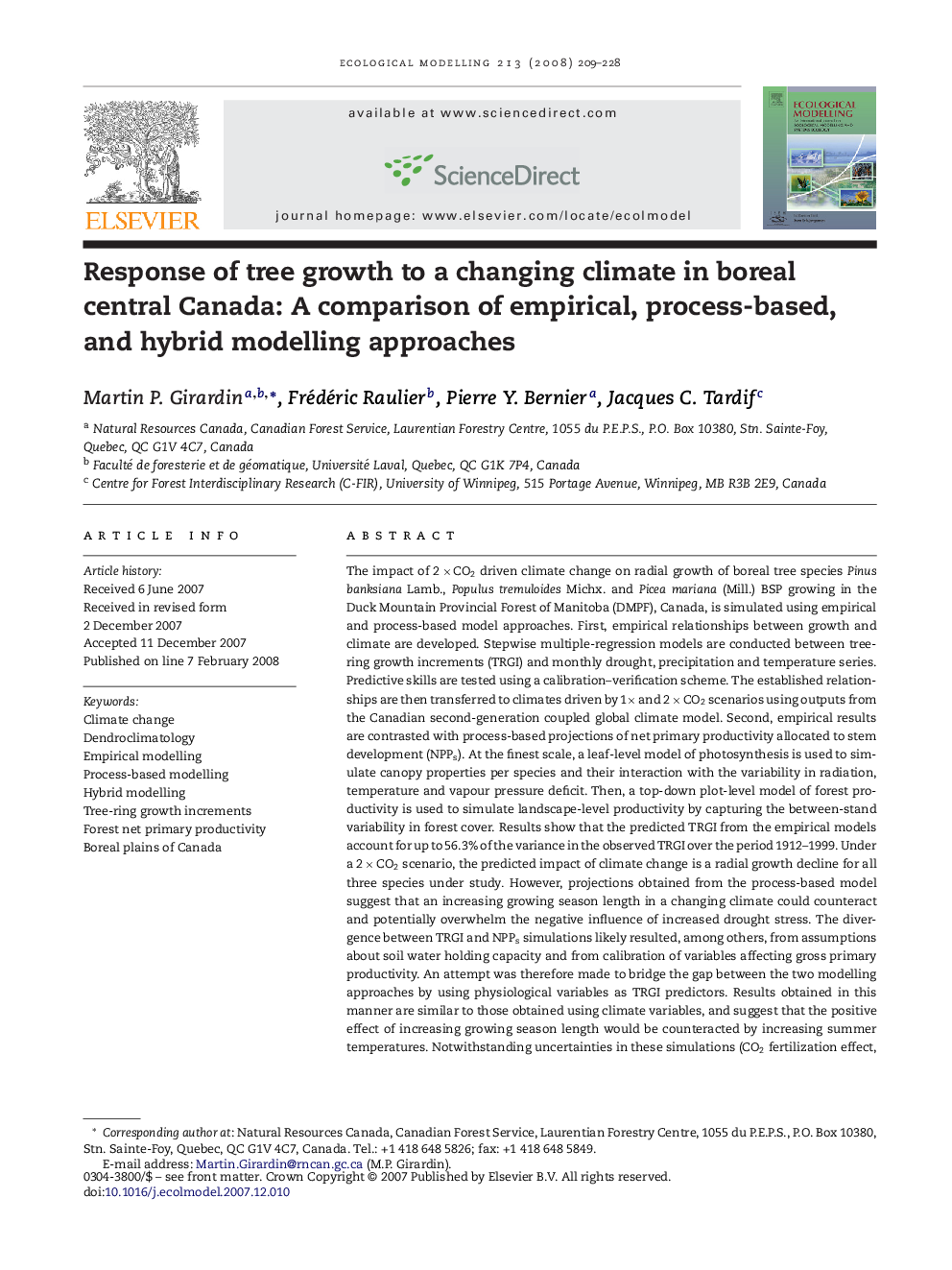| کد مقاله | کد نشریه | سال انتشار | مقاله انگلیسی | نسخه تمام متن |
|---|---|---|---|---|
| 4378245 | 1303470 | 2008 | 20 صفحه PDF | دانلود رایگان |

The impact of 2 × CO2 driven climate change on radial growth of boreal tree species Pinus banksiana Lamb., Populus tremuloides Michx. and Picea mariana (Mill.) BSP growing in the Duck Mountain Provincial Forest of Manitoba (DMPF), Canada, is simulated using empirical and process-based model approaches. First, empirical relationships between growth and climate are developed. Stepwise multiple-regression models are conducted between tree-ring growth increments (TRGI) and monthly drought, precipitation and temperature series. Predictive skills are tested using a calibration–verification scheme. The established relationships are then transferred to climates driven by 1× and 2 × CO2 scenarios using outputs from the Canadian second-generation coupled global climate model. Second, empirical results are contrasted with process-based projections of net primary productivity allocated to stem development (NPPs). At the finest scale, a leaf-level model of photosynthesis is used to simulate canopy properties per species and their interaction with the variability in radiation, temperature and vapour pressure deficit. Then, a top-down plot-level model of forest productivity is used to simulate landscape-level productivity by capturing the between-stand variability in forest cover. Results show that the predicted TRGI from the empirical models account for up to 56.3% of the variance in the observed TRGI over the period 1912–1999. Under a 2 × CO2 scenario, the predicted impact of climate change is a radial growth decline for all three species under study. However, projections obtained from the process-based model suggest that an increasing growing season length in a changing climate could counteract and potentially overwhelm the negative influence of increased drought stress. The divergence between TRGI and NPPs simulations likely resulted, among others, from assumptions about soil water holding capacity and from calibration of variables affecting gross primary productivity. An attempt was therefore made to bridge the gap between the two modelling approaches by using physiological variables as TRGI predictors. Results obtained in this manner are similar to those obtained using climate variables, and suggest that the positive effect of increasing growing season length would be counteracted by increasing summer temperatures. Notwithstanding uncertainties in these simulations (CO2 fertilization effect, feedback from disturbance regimes, phenology of species, and uncertainties in future CO2 emissions), a decrease in forest productivity with climate change should be considered as a plausible scenario in sustainable forest management planning of the DMPF.
Journal: Ecological Modelling - Volume 213, Issue 2, 10 May 2008, Pages 209–228